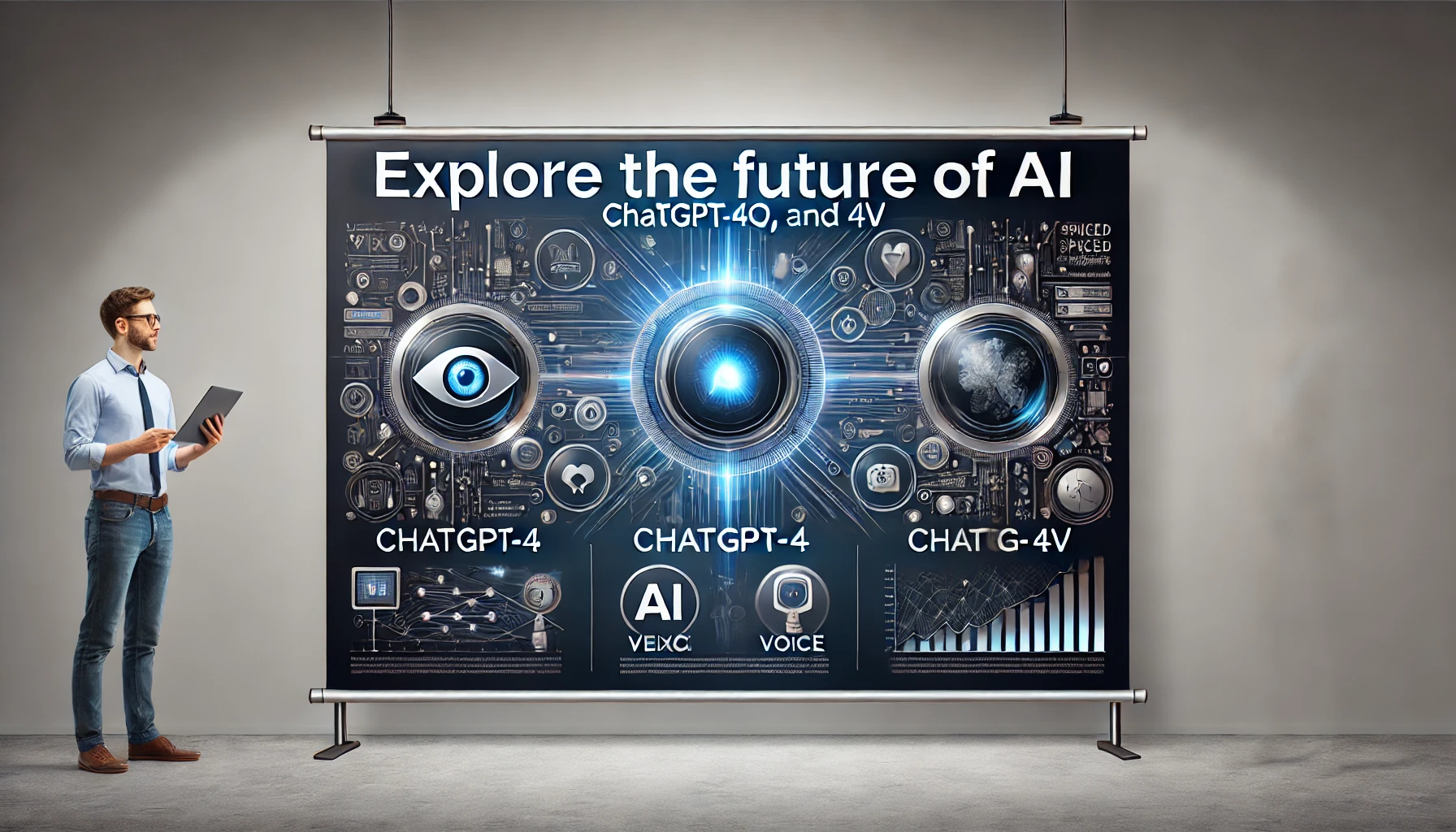ChatGPT4-ChatGP4o-ChatGPT4V – Features, Comparisons, and Release Insights
ChatGPT4-ChatGP4o-ChatGPT4V: As artificial intelligence continues to evolve, OpenAI remains at the forefront of innovation with its latest iterations of the Generative Pre-trained Transformer (GPT) models: ChatGPT-4, ChatGPT-4o, and ChatGPT-4V. Each of these models brings unique enhancements and capabilities, pushing the boundaries of natural language processing, image recognition, and multimedia interactions. In this comprehensive guide, we’ll delve into the features, capabilities, and performance of these models, explore their release timelines, and compare them to understand which one best suits different user needs.
ChatGPT-4 vs GPT-4o: A Detailed Comparison
The introduction of ChatGPT-4o has sparked significant interest, particularly in how it compares to the original ChatGPT-4. Both models are part of OpenAI’s continuous efforts to refine AI interactions, but they serve different purposes and come with distinct advancements.
Performance and Speed
- ChatGPT-4: As the fourth iteration of OpenAI’s GPT series, ChatGPT-4 set new standards in natural language processing (NLP). It offers improved accuracy and contextual understanding, making it a powerful tool for tasks ranging from text generation to complex data analysis.
- ChatGPT-4o: The ChatGPT-4o vs ChatGPT-4 debate often centers on performance enhancements. ChatGPT-4o introduces significant improvements in speed, particularly in processing text and multimedia inputs. With an average response time of just 320 milliseconds for audio inputs, ChatGPT-4o is designed to handle real-time interactions more efficiently, making it a preferable choice for applications where speed is crucial, such as customer support or real-time translations (Raona).
Language and Multimedia Capabilities
- ChatGPT-4: This model excels in handling text-based tasks with precision. It’s particularly strong in generating coherent and contextually relevant content across various domains, making it ideal for businesses that require high-quality text generation.
- ChatGPT-4o: ChatGPT-4o features extend beyond text to include audio and image processing. This model’s ability to seamlessly handle multiple input formats—text, audio, and images—marks a significant leap in AI’s ability to mimic human-like interactions. It’s also more cost-efficient and offers better support for multiple languages, making it a versatile tool for global businesses (Raona).
ChatGPT-4 Turbo: Enhanced Efficiency and Speed
In the quest to balance performance and cost, OpenAI introduced ChatGPT-4 Turbo, a variant designed to offer the capabilities of ChatGPT-4 with reduced latency and improved efficiency. This model is particularly popular among developers and businesses that require high-volume API access without compromising on response times.
Key Advantages of ChatGPT-4 Turbo
- Speed and Efficiency: One of the most notable ChatGPT-4 Turbo benefits is its optimized performance, which allows for faster response times while maintaining the accuracy of the original model. This makes it a cost-effective solution for applications that require rapid processing of large datasets (OpenAI).
- Use Cases: ChatGPT-4 Turbo is well-suited for applications that involve high-frequency interactions, such as chatbots, automated customer service, and real-time data analysis. Its balance of speed and accuracy makes it a versatile tool for both small businesses and large enterprises.
ChatGPT-4V: Expanding into Voice and Visuals
ChatGPT-4V represents a significant evolution in the GPT series by integrating voice and visual capabilities. This model is designed to handle a broader range of inputs, making it a powerful tool for multimedia applications.
Voice and Visual Capabilities
- Voice Input and Output: One of the standout ChatGPT-4V capabilities is its ability to process and generate voice responses. This makes it ideal for applications like virtual assistants, where spoken language processing is essential. The model’s voice recognition is highly accurate, offering near-human levels of understanding and response (KrishaWeb).
- Image Recognition: ChatGPT-4V image recognition capabilities allow it to analyze and generate content based on visual inputs. This feature is particularly valuable in fields like healthcare, where AI can assist in diagnosing conditions from medical images, or in retail, where it can analyze product images to provide recommendations (KrishaWeb).
Application Potential
- Real-Time Communication: The ability of ChatGPT-4V to handle voice and video inputs makes it an ideal candidate for real-time communication platforms. It can be used in video conferencing tools to provide live translations, subtitles, or even to enhance video content with AI-generated graphics.
- Enhanced User Engagement: With ChatGPT-4V voice and video capabilities, businesses can create more engaging user experiences. For instance, virtual tours or interactive online courses can be significantly enhanced with the addition of AI-driven voice and video interactions.
Release Date and API Access: What You Need to Know
The release dates for these models have been a major focus of attention, particularly for developers and businesses eager to integrate the latest AI advancements into their workflows.
ChatGPT-4V Release Date
- Expected Timeline: The ChatGPT-4V release date is expected to be announced in the final quarter of 2024, with early access potentially available to select developers through OpenAI’s partnership programs. This staggered release approach allows for real-world testing and feedback before a full-scale launch (Geeky Gadgets).
API Access for ChatGPT-4o
- Enhanced API Access: ChatGPT-4o API access offers developers the ability to integrate this powerful model into their applications with ease. The API is designed to be more efficient, making it a cost-effective option for businesses that require large-scale AI deployment. Additionally, the API supports multi-language interactions, making it a versatile tool for global operations (Raona).
ChatGPT-4V vs ChatGPT-4o: Which Is Right for You?
Choosing between ChatGPT-4V and ChatGPT-4o depends largely on your specific needs. Both models offer advanced capabilities, but they cater to different use cases.
When to Choose ChatGPT-4V
- Multimedia Applications: If your focus is on applications that require processing voice and visual inputs, ChatGPT-4V is the clear choice. Its advanced image recognition and voice processing make it ideal for industries like healthcare, education, and multimedia content creation.
- Interactive User Experiences: For businesses looking to enhance user engagement through real-time interactions, such as virtual assistants or customer service bots, ChatGPT-4V’s ability to handle voice and video inputs is unmatched.
When to Choose ChatGPT-4o
- Text-Centric Applications: If your primary need is for text processing with added benefits of speed and multi-format input, ChatGPT-4o is a robust option. Its efficiency and speed make it ideal for applications that require real-time text generation and analysis, such as content creation, data analysis, and customer support (Raona).
- Cost Efficiency: ChatGPT-4o’s lower operational costs and improved performance in multilingual contexts make it a more economical choice for businesses that need to deploy AI at scale across different regions.
The Future of AI with ChatGPT-4, ChatGPT-4o, and ChatGPT-4V
As AI continues to evolve, the latest iterations—ChatGPT-4, ChatGPT-4o, and ChatGPT-4V—are pushing the boundaries of what’s possible in natural language processing, image recognition, and voice interaction. Whether you’re looking for speed and efficiency, multimedia capabilities, or a blend of both, these models offer solutions that cater to a wide range of needs.
For those already invested in AI-driven technologies or considering integration, understanding the unique strengths of each model is crucial. The choice between ChatGPT-4o and ChatGPT-4V should be guided by your specific requirements, whether it’s for enhancing user engagement, improving operational efficiency, or exploring new applications in multimedia content.
As these models continue to develop, they will undoubtedly open new avenues for innovation across various industries. Staying informed about their features, capabilities, and release timelines will ensure that you remain at the cutting edge of AI technology.
For more in-depth analysis and educational resources on AI and other emerging technologies, visit Regent Studies. To further explore the potential of AI in various industries, check out this external resource.




